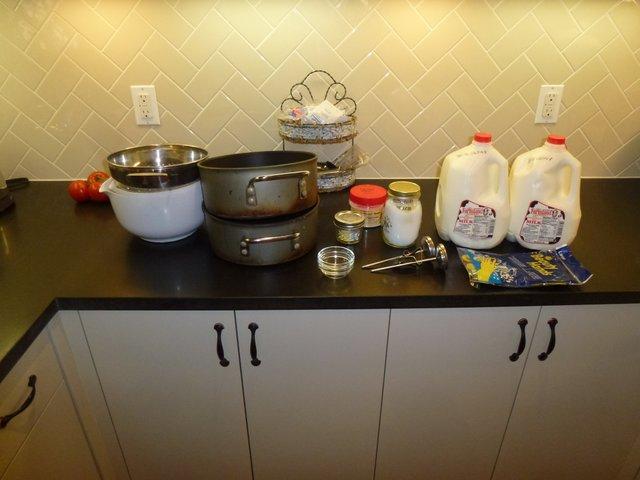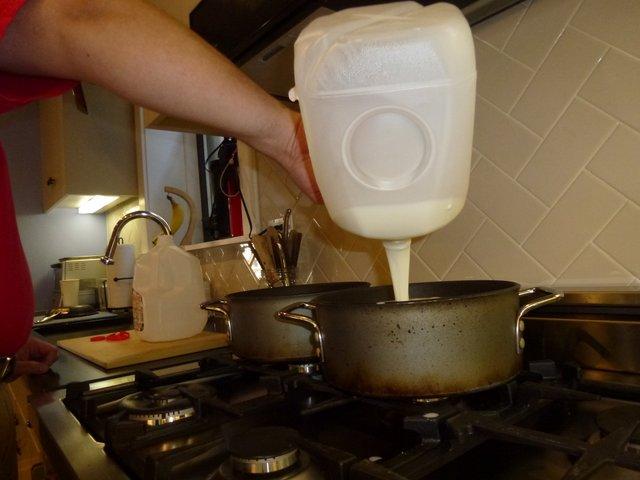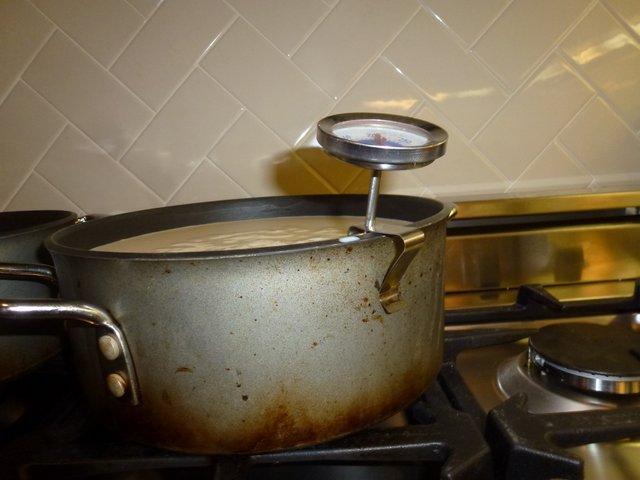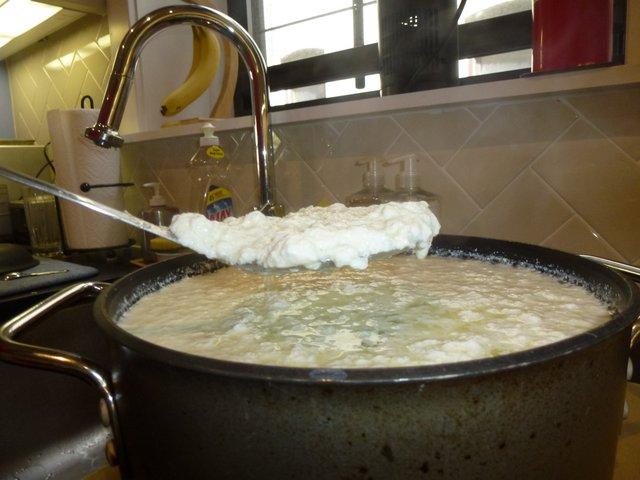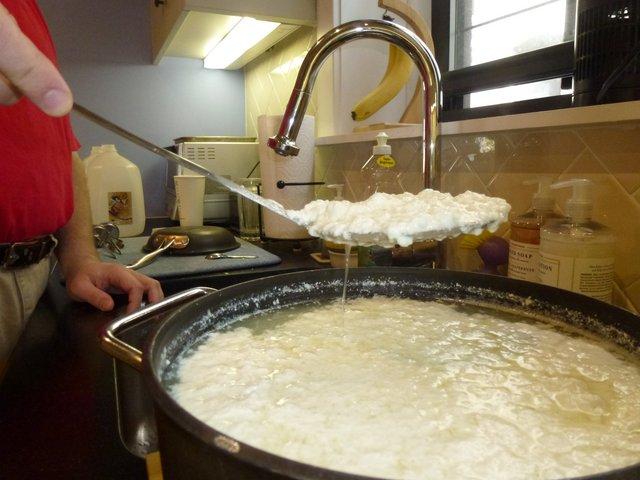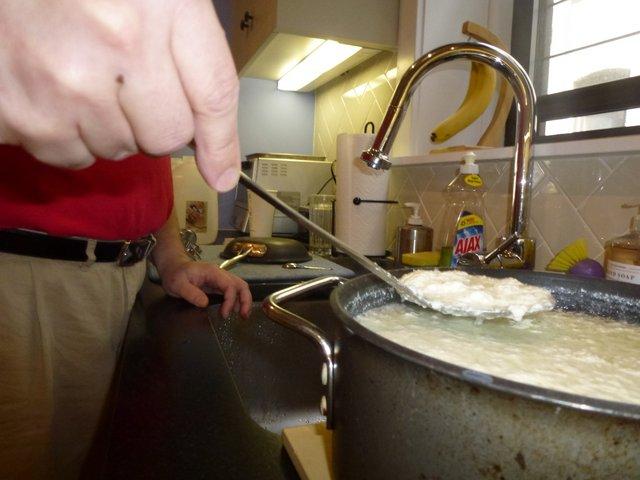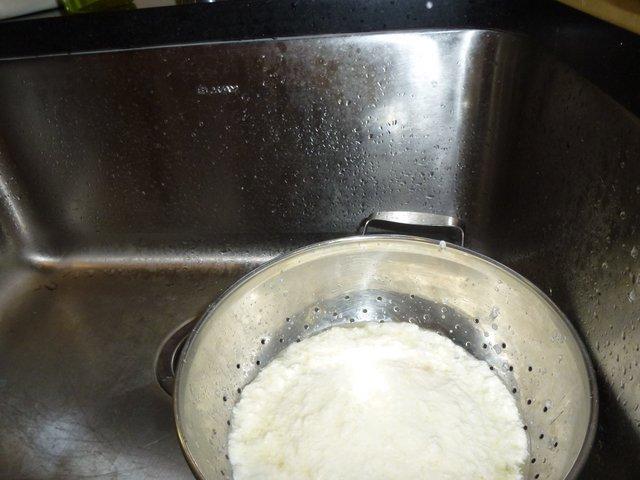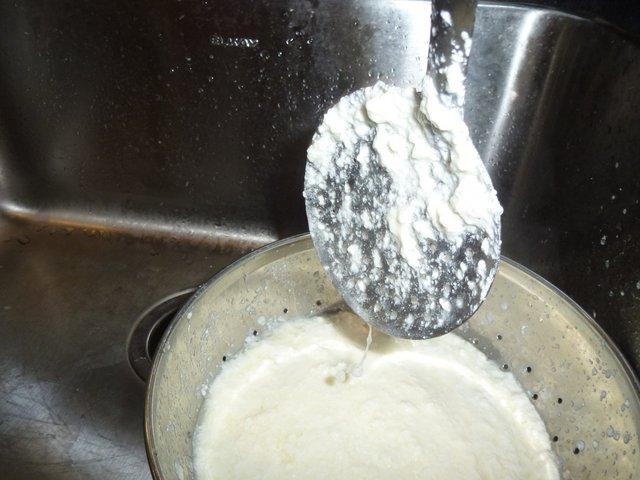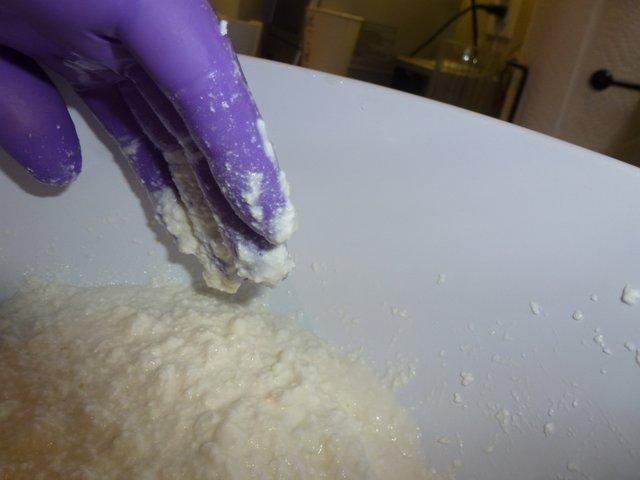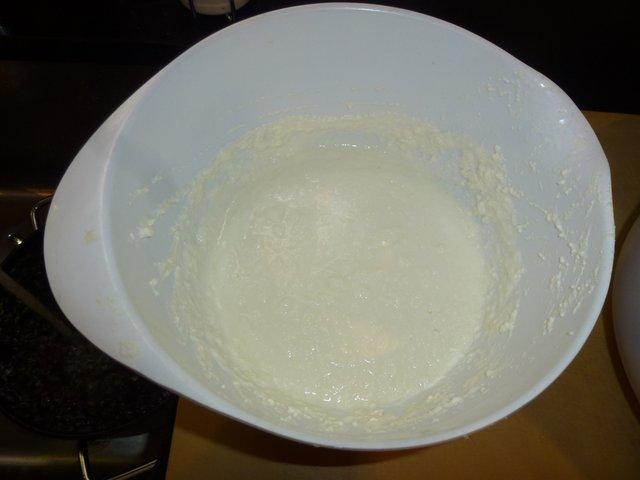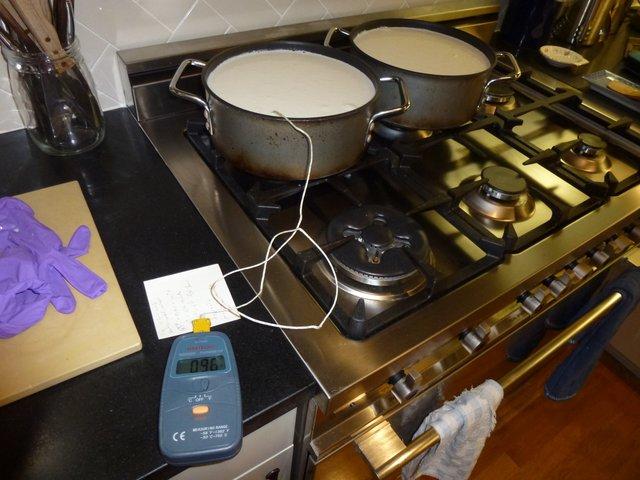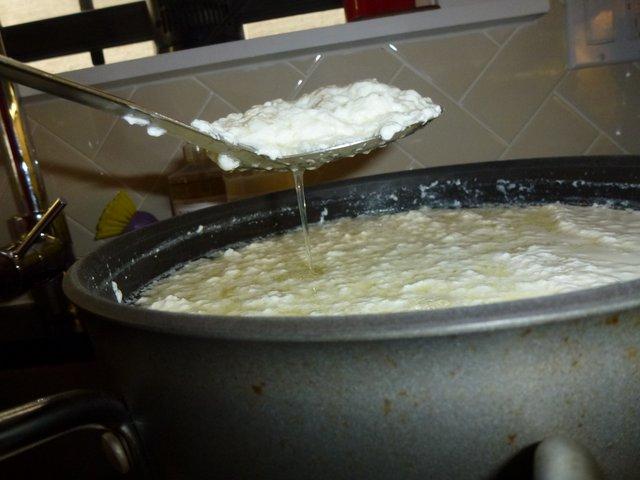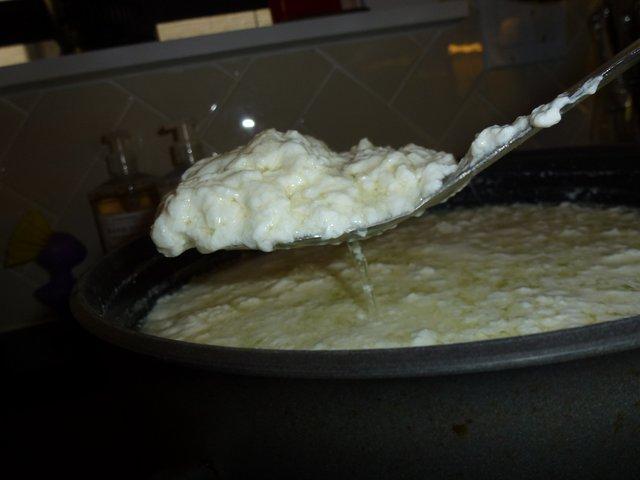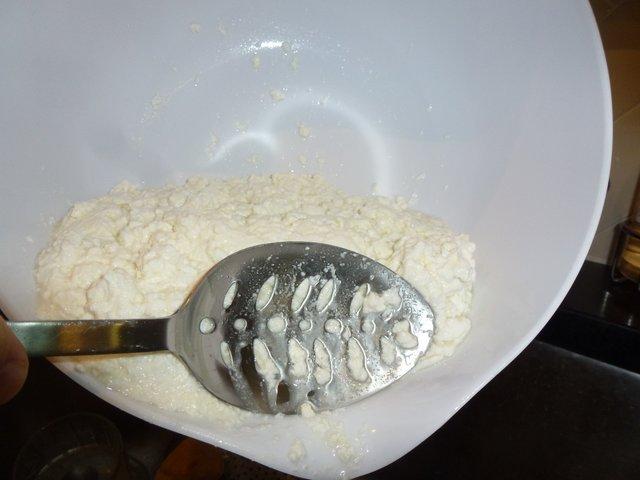-
Posts
28,458 -
Joined
-
Last visited
Content Type
Profiles
Forums
Store
Help Articles
Everything posted by Fat Guy
-
First I've heard of it. Has anybody read it? Is it worthwhile?
-
Most of the serious coffee and tea people I know in NYC won't use water straight from the tap. They either filter it or use bottled.
-
A little Googling about the NY water claim yields nothing definitive. It seems there are two justifications for the claim: that the water is clean (which can be replicated by filtration), and that the water in NYC has a unique combination of dissolved minerals (which is harder to prove or disprove, in terms of culinary effect). There have been a few blind tests with results one way or the other, but they haven't been all that rigorous. To me, the whole issue seems bogus because most pizza and bagels in NYC suck and there are good examples of both elsewhere.
-
Rennet nomenclature turns out to be more complex than I'd imagined. I hope someone will present a definitive taxonomy.
-
I personally have dined at Sally's and Pepe's a combined total of about a hundred times over a period of about 20 years, and I think overall Sally's is better. The Pepe's white-clam pie is one of the best pies in the universe, and that particular pie is much better than Sally's version of the same, but for all other pies I prefer Sally's. Better crust, cheese, sauce. In any event, I think there is no NYC pizzeria doing anything worthy in this style, though the Lombardi's white-clam pie is mighty fine (and in my opinion the only good thing there). Which doesn't mean all New Haven pizza is better than all New York pizza, but it does mean there are very fine examples of pizza there that, in their style, are better than any New York example. More to the point, when you look at all the pizzerias from all over that are celebrated independent of water quality, there's just no way the theory holds.
-
I wouldn't want to go down the rabbit hole and make this a topic about pizza. Suffice it to say, the claim that New York pizza is somehow superior is not valid. There's great pizza all over. Just one example, and there are many: if you look at Richman's best-pizza list you'll find representation from all over with no correlation to water quality. In places with problematic water, they can just filter it. By the way I think New York City water is quite over-chlorinated at this point -- we have seen a lot of chlorine creep in my lifetime. Richman's list, for reference: 01. Great Lake (Chicago) 02. Lucali (Brooklyn, NYC) 03. Pizzeria Delfina (San Francisco) 04. Pizzeria Bianco (Phoenix) 05. Bob & Timmy's (Providence, R.I.) 06. Sally's Apizza (New Haven, Conn.) 07. Tomato Pie (Los Angeles) 08. Co. Company (Manhattan, NYC) 09. Tacconelli's (Philadelphia) 10. Totonno's (Brooklyn, NYC) 11. Tarry Lodge (Port Chester, N.Y.) 12. Frank Pepe (New Haven, Conn.) 13. Luigi's "the Original" (Harrison Township, Mich.) 14. Gialina (San Francisco) 15. Buddy's (Detroit) 16. Antica Pizzeria (Marina Del Ray, Calif.) 17. A16 (San Francisco) 18. Al Forno (Providence, R.I.) 19. Galleria Umberto (Boston) 20. Famous Joe's (Manhattan, NYC) 21. Tomatoes Apizza (Farmington Hills, Mich.) 22. Osteria (Philadelphia) 23. Santarpio's (Boston) 24. Niki's (Detroit) 25. Una Pizza Napoletana (Manhattan, NYC)
-
Just to clarify, and someone please correct me if I'm wrong, my understanding is that there are 3 rennet options: 1. Animal rennet 2. Vegetable rennet 3. "Microbial" rennet, which is an analog of animal rennet but made in the lab I have not seen 3 on any of the cheesemaking sites, only on the lab sites. I'll order some from a lab company if that's the only option, but would rather support the cheesemaking people. You indicated that most internet cheesemaking supply sites sell the microbial rennet, and I wasn't able to find that. Looking upthread, I don't see a link that helps on that front, but I can easily miss things because I'm dumb.
-
The bagels are better on Long Island and the pizza is better in Connecticut, Arizona and California -- or at least they have very fine, top-of-pyramid examples in each of those watersheds. I can't see it being the water, nor have I heard of any evidence for the proposition.
-
Microbial rennet. Most internet cheese supply retailers sell it. Do you have a link? I've only seen animal and vegetable rennet on the cheesemaking sites.
-
I wonder how one gets hold of the lab-created, synthetic rennet that's the same as animal rennet. Isn't that what most commercial producers are now using?
-
No, though with farmed it can be close.
-
In other words, there has long been a persistent myth that all these places make homemade fresh mozzarella. The average schmoe just assumes these places are making cheese on premises. The reality is that they're all buying curds from industrial producers like Polly-O. Likewise, there's all this talk about whose smoked salmon is best, but everybody is getting it from Acme.
-
I think Peter Luger still consistently has better porterhouses than anyone else, so to me that's not a myth. I think, however, the quality of steak available retail has improved quite a bit over the past decade or so. The average supermarket has worse steak now than when I was a kid, but you can now get steakhouse-quality steak at all sorts of places ranging from Debragga online to Fairway (their dry-aged Prime is probably the best deal in town) to Eataly. It's not cheap, though.
-
Here's the NYT article on smoked salmon, from a few years back: http://www.nytimes.com/2006/05/14/magazine/14food.html "If you've ever taken sides in a debate over which New York purveyor has the best smoked salmon, you might be surprised to learn that Zabar's, Citarella, Balducci's, Costco and Wegmans — in fact most grocers on the East and West Coasts, in the Midwest and even a few in Puerto Rico — buy their fish in large part from the same smokehouse: Acme Smoked Fish."
-
I wonder if we can get a list of 10. I was thinking about 2 of them, and thought this topic would be worth starting: 1. Most of the famous places are using the same smoked salmon (Acme). 2. Most of the renowned sellers of fresh mozzarella are making it from purchased curds (from Polly-O). Anything else along these lines?
-
We may experiment with using more or different rennet. Though, the half tablet is supposed to coagulate 25 liters of milk -- I wonder just how much more it's worth trying.
-
I don't know that DiPalo or any of the local places will have relevant knowledge. They purchase their curds, I believe, and the problems I've been asking about have to do with making curds. I'm sure Polly-O or another curd supplier has knowledge, but I figure they use industrial processes that wouldn't be relevant to me.
-
The answer is, most likely, that it was the brand of milk that was at issue. I tried two new brands just now, and one of them -- Five Acre Farms Local Milk -- has turned into something like mozzarella. There's a lot I still need to learn about the stretching and forming. The other brand of milk produced more cottage cheese. I also switched to bottled water but I imagine this is not the issue, since one worked and one didn't. But I will backtrack in subsequent experiments to see what happens.
-
In each instance I microwaved on high for 1 minute after separating the curds, but it didn't seem to move them toward anything usable. I did an additional minute on a later attempt and it also made no difference. It was clear just from mushing the curds around that we were never going to move out of the cottage cheese phase.
-
I used 1/4 tablet of rennet per 1 gallon on the first try. On the second try I upped it to 1/2 tablet per gallon without any change in results. I'm guessing the rennet is not the relevant variable. I'm going to try bottled water, though. The rennet by the way is Marschall M-50 Vegetable Rennet. I increased the coagulation time to 30 minutes on the second try. Made no difference. I'm using the temperatures that pretty much everyone recommends, and a thermocouple thermometer. I'm not sure what I'd change there. I got two new brands of milk this morning, and some bottled water. Back to experimentation.
-
Here are some photos of yesterday's attempts. Bear in mind, this is for a first-grade science project and a first grader took these photos. You can see the curds just aren't right.
-
I heated the milk to 85F and added 1.5 tsp. of citric acid dissolved in a cup of filtered water. Raised to 100F and added 1/2 a rennet tablet crushed and dissolved in a small amount of filtered water. Continued heating to 105F. Cut off heat and let sit for 15 minutes. Gently removed curds with a slotted spoon. Plenty of liquid came out, but ultimately the curds were too "wet" to form into anything.
-
I haven't. What's the procedure?
-
That's my primary working theory. I'm going to try one of the artisanal, local brands tomorrow where the packaging specifies low-temperature treatment. At which point, making my own will cost more per pound than just buying the cheese. But I guess this isn't about saving money.
-
This doesn't appear to be part of the process for mozzarella. The milk for mozzarella is only heated to 105F/40.5C, so it's recommended that the citric acid crystals be pre-dissolved in something before adding to the milk. The overwhelming sentiment of people reporting online about their mozzarella projects is that you need rennet.



